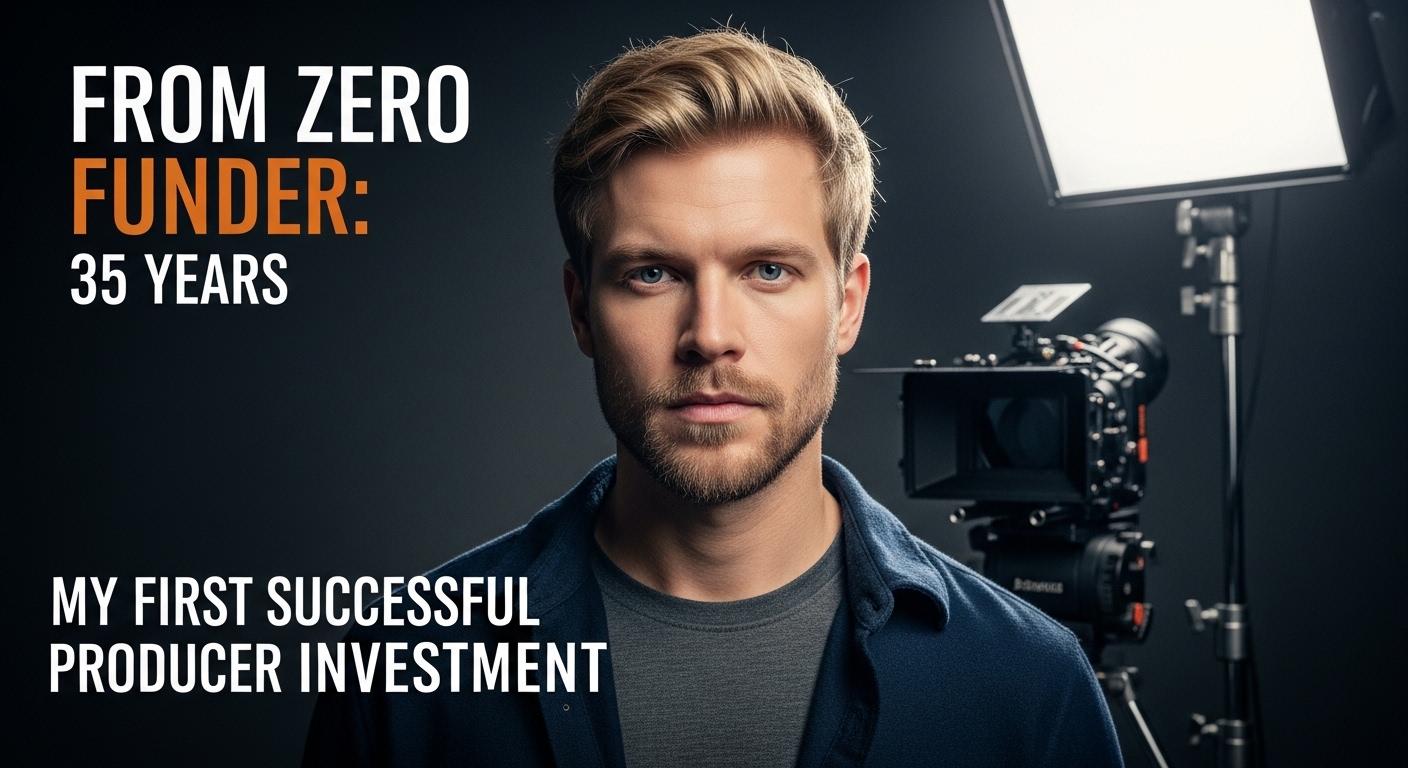The world of film and media production is both exhilarating and complex. Producers juggle a myriad of responsibilities, from managing budgets to coordinating schedules. However, lurking beneath the surface of this creative endeavor are profound ethical dilemmas that can complicate decision-making at every turn.
Whether it’s handling sensitive cultural representation or balancing financial backers’ expectations with artistic integrity, navigating these issues requires clarity and conscience.
Addressing ethical dilemmas isn’t merely an academic exercise—it’s essential for producers to create meaningful and responsible work. Each choice they make has far-reaching implications, influencing not just their projects but also societal perceptions and industry standards.
By engaging thoughtfully with these challenges, filmmakers can uphold the values of fairness, respect, and transparency while contributing to a more ethically aware media landscape.
So what are the core dilemmas waiting in the wings? Let’s explore the multifaceted nature of ethics in production and examine how producers can rise to meet these critical challenges head-on.
Defining Ethical Dilemmas in Production
Ethical dilemmas in film and media arise when producers are faced with situations that challenge their moral principles or professional guidelines. These dilemmas often manifest as conflicts between personal beliefs, artistic vision, and the expectations of stakeholders, including studios, audiences, and the broader societal context.
Producers must navigate these complex waters carefully; what may seem like a straightforward decision can accumulate layers of ethical complexity as diverse perspectives come into play.
One common ethical dilemma encountered by producers is the fine line between creative storytelling and potential exploitation of sensitive subjects. For instance, consider a documentary highlighting a tragic event from the lives of marginalized communities.
While producing this documentary may serve an important purpose in raising awareness, it raises questions about how to portray individuals’ suffering without commodifying it for entertainment profit. Producers must balance their desire to tell impactful stories with an obligation to represent those featured respectfully and accurately.
Another frequent challenge arises regarding representation and inclusivity within content creation. The casting process often ignites discussions centered on ethnicity, gender identity, sexual orientation, and disability representation.
A producer might find themselves torn between financial pressures—such as attracting star power—and the ethical responsibility to cast authentic portrayals that resonate with diverse audiences. This tension not only affects the production’s integrity but also its reception in today’s increasingly socially conscious landscape.

Ultimately, understanding what constitutes an ethical dilemma involves recognizing that decisions made during production can have far-reaching ramifications beyond financial implications.
From choosing narratives that honor lived experiences to considering accurate representations of characters on screen, producers inevitably engage with a multitude of factors shaping both their work’s industry impact and social responsibility.
The Impact of Cultural Sensitivity.
As globalization continues to shape the filmmaking landscape, cultural sensitivity has emerged as a critical consideration for producers. Understanding diverse perspectives in filmmaking involves acknowledging not only the stories being told but also the backgrounds and experiences of those telling them.
For instance, when a film addresses a culture that is not native to its creators, it’s paramount that producers engage with consultants from that community, ensuring an accurate and respectful portrayal.
This consultation can help bridge gaps in understanding and provide insights that enrich the narrative, allowing it to resonate more authentically with audiences.
Navigating cultural representation responsibly demands more than just avoiding stereotypes or misrepresentations; it requires proactive efforts to amplify marginalized voices.
A notable example can be seen in the production of Disney’s “Moana,” where significant emphasis was placed on collaborating with Pacific Islander cultural experts to depict Polynesian cultures accurately.
By including these voices early in the development process, filmmakers were able to create a richer story while also engaging respectfully with indigenous narratives.
Conversely, failures to prioritize cultural sensitivity have led to backlash against projects like “Aloha,” which faced criticism for casting predominantly white actors in roles meant for Asian characters. Such missteps illuminate how ignoring cultural context can lead to damaging portrayals and alienate target audiences.
Producers are tasked not only with creating compelling content but also with fostering inclusivity within their teams and productions. Hiring practices should reflect a commitment to diversity behind the camera as well as in front of it.
This could mean providing opportunities for underrepresented groups in key creative positions such as writers, directors, and production designers—individuals who bring genuine insights into their cultures and enable authentic storytelling.
As awareness around these issues grows, making strategic choices about team composition becomes an essential aspect of responsible filmmaking.
Ultimately, ethical dilemmas related to cultural sensitivity encourage producers to contemplate their role within broader societal dialogues about representation and inclusion.
Engaging thoughtfully with diverse perspectives nurtures understanding among filmmakers while enriching storytelling across genres and styles. As industry standards evolve along with audience expectations for representation, embracing this responsibility will be crucial for successful and respectful productions moving forward.
Balancing Artistic Freedom and Responsibility.
The interplay between artistic freedom and social responsibility forms a crucial dilemma for film producers. Creative expression is often celebrated as a hallmark of the arts, where individuals are encouraged to push boundaries and explore complex themes.
However, this freedom does not exist in a vacuum; it must be matched by an awareness of the impact that films can have on audiences and society at large.
Producers frequently navigate tensions between their creative aspirations and ethical considerations, striving to present narratives that resonate while remaining socially conscious.
One notable case highlighting this dilemma occurred with the release of “The Interview,” a satirical comedy about North Korea.
While producers aimed to create a bold commentary on authoritarian regimes, the film sparked significant backlash due to its perceived insensitivity toward a complex geopolitical landscape.
The threats from North Korea exemplified how artistic choices can incite real-world consequences, sparking discussions around the need for filmmakers to weigh their creative ambitions against potential cultural fallout.
This incident serves as a reminder that when tackling sensitive subjects, producers must engage with various perspectives and acknowledge the implications of their work.

Another compelling illustration is seen in documentaries, such as “Blackfish,” which critically examined SeaWorld’s treatment of captive orcas.
While many praised the filmmakers for shedding light on animal welfare issues, there were also critiques regarding sensationalism and emotional manipulation.
Such responses position producers in challenging territory: how do they balance compelling storytelling with accurate representation? Neglecting these responsibilities can lead to backlash and damage reputations but ensuring responsible storytelling can instill lasting change.
Ultimately, finding equilibrium between artistic expression and social accountability is essential for today’s filmmakers and producers. It requires ongoing dialogue around subject matter integrity alongside genuine engagement with impacted communities.
By embracing this duality, producers can create substantive work that inspires conversation without compromising ethical standards or endangering vulnerable populations within their narratives.
Transparency with Funding Sources.
In the realm of film production, transparency regarding funding sources is a fundamental ethical obligation that can significantly influence the integrity of a project. Producers often find that financial backing comes from various avenues, including private investors, corporations, and even public funds.
It is essential for filmmakers to disclose these funding sources not just as a matter of good practice but also to maintain credibility with their audience and stakeholders.
Audiences today are increasingly aware and concerned about the social implications behind where money originates—whether it be from reputable organizations or entities known for unethical practices.
The ethical implications of conditional funding arrangements further complicate this landscape. For instance, a producer might accept financing from a corporation that attaches specific stipulations regarding content portrayal, messaging, or marketing strategies.
Such conditions could persuade filmmakers to alter narratives in ways that conflicts with their artistic vision or compromise the authenticity of storytelling.
A classic example is when producers may unwittingly engage in ‘astro-turfing,’ promoting corporate agendas under the guise of genuine art without full disclosure to viewers. This lack of clarity raises concerns about manipulation and misrepresentation within creative works.
Moreover, failing to be transparent about funding sources can lead to public backlash and distrust among audiences once discrepancies come to light. In recent years, several high-profile films faced scrutiny after revelations surfaced regarding opaque financial ties to controversial funders.
Producers must consider how hidden affiliations might impact their relationships with fans and critics alike; any negative fallout could jeopardize not only box office performance but also long-term reputations within the industry.
Ultimately, being transparent about funding sources creates an environment conducive to trust—between producers and their market as well as within the creative community itself.
As media consumers become more discerning about the influences behind what they watch, it falls upon producers to uphold standards of honesty and accountability that reflect a commitment not only to cinematic excellence but also to ethical values in filmmaking.
Fair Treatment of Talent and Crew.
In the film and media production industry, the fair treatment of talent and crew members stands as a pivotal ethical dilemma that producers must navigate. Ensuring equitable pay and favorable working conditions is not merely a matter of compliance with labor laws; it reflects a producer’s commitment to fostering a respectful and just workplace.
For instance, widely publicized discrepancies in pay between male and female actors have sparked intense scrutiny, leading to calls for transparency regarding salaries. Producers face the challenge of addressing these inequalities while maintaining competitive budgets—an issue that demands both ethical commitment and strategic resource management.
Moreover, harassment and discrimination on set remain serious concerns that require vigilant attention from producers. High-profile cases highlighting toxic environments in Hollywood have illustrated how harmful misconduct can cascade into larger systemic issues if left unaddressed.
A culture that enables bullying or belittling behavior undermines not only individual morale but also hampers the overall collaborative spirit essential in creative endeavors.
Effective producers understand this dynamic; they prioritize creating policies that promote inclusivity, whether through anti-harassment training or establishing clear avenues for reporting grievances without fear of retribution.

Additionally, the industry’s increasing focus on diversity has brought about another layer of responsibility for producers. Surrounding themselves with diverse talent not only enhances storytelling but also signals an inclusive stance towards issues affecting marginalized communities within filmmaking.
This means actively seeking input from underrepresented voices during casting processes or development phases—ensuring stories are told authentically rather than through potentially harmful stereotypes or tokenism.
When producers genuinely value the perspectives of their crew and cast, they contribute positively to a changing landscape where equity becomes intertwined with creativity.
As conversations about fairness grow louder across various forums—from film festivals to social media—producers who prioritize equitable treatment pave the way for healthier work environments while enhancing the stories being told on screen.
By making fair treatment non-negotiable in their practices, they can lead by example and advocate for meaningful change throughout the industry. Such efforts reinforce a critical understanding: an ethical approach not only safeguards individuals but enriches the collective artistry within film production as well.
Considerations for Intellectual Property.
Intellectual property (IP) is a crucial concern in the film and media landscape, impacting not only legal compliance but also ethical considerations surrounding creativity and ownership.
For producers, understanding the nuances of copyrights, trademarks, and creative ownership can often lead to dilemmas that challenge their artistic integrity and business acumen.
When approaching a project that relies on existing works—be it a book, play, or previous film—producers must consider how they handle adaptations while respecting the original creators’ rights and intentions. This is particularly pertinent in an industry where remakes and reboots are increasingly prevalent.
Ethically navigating adaptations requires more than just acquiring rights; it’s about honoring the source material. A notable example is Disney’s adaptation of classic fairy tales, which has repeatedly faced critiques over its portrayal of female characters.
While the studio provides modern reinterpretations intended to resonate with contemporary audiences, it also grapples with backlash from advocates who feel these adaptations sometimes stray too far from original narratives or cultural contexts.
Producers involved in such projects should aim for a balance that respects both creative ownership and public perception; otherwise, they risk eroding trust with audiences accustomed to certain values associated with beloved stories.
Furthermore, producers should remain vigilant regarding potential infringements on IP when brainstorming new content. The line between inspiration and appropriation can be exceedingly thin; thus, establishing a respectful dialogue with original creators can mitigate misunderstandings and foster collaboration rather than contention.
Involving writers or artists from whom inspiration is drawn can add authenticity to projects while simultaneously acknowledging their contributions—a practice that enhances both moral standing and audience reception.
In essence, ethical considerations surrounding intellectual property amplify as societies become more aware of issues tied to representation and origin stories within media.
Producers have a responsibility not only to avoid legal pitfalls but also to champion fair treatment of intellectual works by valuing originality throughout production processes. By doing so, they contribute positively to an industry evolving towards greater inclusivity while ensuring respect for the legacies upon which new stories are built.
Environmental Sustainability in Production.
In an age where climate change and environmental degradation are at the forefront of global concerns, the film industry has a crucial responsibility to adopt eco-friendly practices. Producers hold the reins not just for storytelling but also for setting a precedent on how filmmaking can interact with our planet.
The production process involves numerous stages that significantly contribute to waste and carbon footprints—from set construction, transportation, lighting, and catering. Thus, acknowledging and implementing sustainable practices is vital not only for minimizing environmental impact but also for fostering a culture of responsibility within the industry.
Various initiatives have emerged from producers striving to implement sustainable practices. One notable example is the “Green Production Guide,” which offers resources and strategies for reducing waste on set.
Many productions have started using digital alternatives instead of paper scripts and call sheets, significantly cutting down their paper usage. Productions such as “The Amazing Spider-Man 2” introduced innovative recycling programs that ensured everything from old props to costumes was either reused or recycled appropriately.
Additionally, companies like Earth Friendly Productions take it further by providing offsets for carbon emissions through tree planting initiatives, showcasing how filmmakers can integrate sustainability into their budgets meaningfully.

Another compelling example comes from Netflix; they have committed to achieving net-zero greenhouse gas emissions by 2022 across their entire operation. This commitment includes working closely with their productions worldwide to implement best practices tailored towards energy efficiency.
By employing electric vehicles for transport and collaborating with local crews who can supply materials sustainably sourced in proximity to filming locations, they demonstrate that significant changes can be achieved when financial backing aligns with ecological integrity.
Ultimately, integrating environmental sustainability into film production is more than just an ethical obligation; it serves as a catalyst for innovation within the industry. As audiences become increasingly aware of environmental issues, films highlighting these themes gain relevance and appeal.
By making responsible choices today—whether it’s choosing sustainable materials or promoting green technologies—producers not only safeguard our planet’s future but also pave the way for storytelling that harmonizes art with ecology.
Legal Implications and Compliance.
Producers in the film and media industry occupy a unique position where creativity and legality intersect. Laws governing ethical practices play an essential role in shaping how content is developed, produced, and distributed.
These legal frameworks are designed not only to protect the intellectual property of creators but also to ensure fair treatment of all individuals involved in production.
From labor laws that dictate fair wages and working hours to regulations surrounding copyright and distribution, producers must navigate a complex landscape where ignorance can have serious repercussions. Violations can lead to legal disputes, financial loss, and even damage to reputations.
One crucial area where legal implications come into play is your responsibility to provide transparency regarding funding sources or partnerships within the industry.
For instance, a production that fails to disclose sponsorship from organizations with questionable ethics or controversial backgrounds could be held accountable for misrepresentation.
This lack of disclosure may not only breach trust with audiences—who might unknowingly support unethical practices—but could also result in lawsuits from parties negatively impacted by those affiliations. Producers must carefully consider their association with such stakeholders as it directly impacts both credibility and audience reception.
Failure to adhere to legal regulations can have immediate and far-reaching consequences for everyone involved in a production. A notable example is the recent scrutiny faced by various high-profile productions over allegations of harassment on set.
Such cases underscore the potential legal ramifications when filmmakers neglect policies aimed at safeguarding talent and crew members—a liability that can mushroom into costly litigation and public backlash.
Moreover, adherence to these regulations isn’t merely about avoiding punishment; it’s about actively fostering an environment of respect, professionalism, and accountability where creative ideas can flourish without undermining fundamental rights.
In essence, navigating the intricate relationship between ethical practices and legal compliance is vital for producers dedicated to maintaining integrity in their work.
As they delve deeper into storytelling amid evolving societal norms—and face increasing pressures from audiences demanding responsible content—the need for comprehensive understanding of pertinent laws cannot be overstated.
Engaging with legal experts who specialize in entertainment law will not only help bolster compliance efforts but also enrich one’s perspective on how ethical decision-making intersects with creative ambitions in film production.
Conclusion: Navigating Ethical Waters in Film Production.
In the fast-paced world of film production, ethical dilemmas are a constant challenge. Producers must balance creative vision with social responsibility.
They face pressures related to cultural sensitivity, financial transparency, and fair treatment of cast and crew. Recognizing these dilemmas is the first step toward addressing them effectively.
Education and open dialogue are crucial for ongoing growth in the industry. Producers should engage in discussions about ethics and continue learning from one another.
By doing so, we can foster a culture that prioritizes both creativity and integrity. In navigating these complex waters, producers have the power to shape not only their projects but also the broader landscape of media storytelling.

I am a highly experienced film and media person who has a great deal to offer to like-minded individuals. Currently working on several exciting projects, I am a film and media practitioner for over a decade. I have achieved a great deal of success in my professional career.





